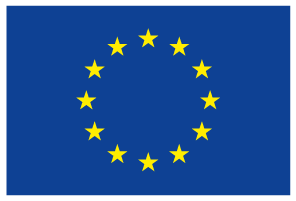Denmark
2025
- Type : Energy planning, Project
- Size : Local community
- Area : Residential, Utility
Environmental benefit
Realizing a CO2-free district heating network in odense
Share
Denmark
2025
- Type : Energy planning, Project
- Size : Local community
- Area : Residential, Utility
Environmental benefit
Discover this use case online
The district heating distribution network in Odense is one of the largest in Denmark. It has more than 65.000 connections. Supplying heat and hot water to a population of round 200.000 people, corresponding to 90.000 households. Also hospitals, institutions, industry, warehouses and so on are serviced.
To come to a CO2-free heat supply, different projects are conducted simultaneously. The strategy is to invest in a
number of smaller units and not to substitute the existing coal
plant 1-1. The smaller units can be multiple 10-20 MW heat
pumps, a 30-50 MW biomass boiler, +50 MW electric boilers
etc.
Strategy formulation
2018: Strategy was formulated
2018: Scenario analysis 1.0 and 2.0 was made
2019 Q2: Analysis of new plants is being reported
2019 Q2: Scenario analysis 3.0. (several iterations) describing the optimal roadmap towards 2025
2019 Q3: Decide on first new plants to commence planning phase
Data centers
Odense has four big data centers. The heat of these data centers will be used as input for the district heating network. For one of the biggest data centers, a brand-new heat pump facility was designed, which routes water through insulated steel pipes to the data centre roof, where it’s directed into copper coils located inside 176 cooling units.
The warm air from the servers heats up the water that flows through the coils before being pumped back into Fjernvarme Fyn’s heat pump facility where it is heated further and distributed to radiators throughout the community. The project reduced the coal production of the district heating network with 25%.
 R-ACES has received funding from the European Union’s Horizon 2020 research and innovation programme under grant agreement N° 892429
R-ACES has received funding from the European Union’s Horizon 2020 research and innovation programme under grant agreement N° 892429
The district heating distribution network in Odense is one of the largest in Denmark. It has more than 65.000 connections. Supplying heat and hot water to a population of round 200.000 people, corresponding to 90.000 households. Also hospitals, institutions, industry, warehouses and so on are serviced.
To come to a CO2-free heat supply, different projects are conducted simultaneously. The strategy is to invest in a
number of smaller units and not to substitute the existing coal
plant 1-1. The smaller units can be multiple 10-20 MW heat
pumps, a 30-50 MW biomass boiler, +50 MW electric boilers
etc.
Strategy formulation
2018: Strategy was formulated
2018: Scenario analysis 1.0 and 2.0 was made
2019 Q2: Analysis of new plants is being reported
2019 Q2: Scenario analysis 3.0. (several iterations) describing the optimal roadmap towards 2025
2019 Q3: Decide on first new plants to commence planning phase
Data centers
Odense has four big data centers. The heat of these data centers will be used as input for the district heating network. For one of the biggest data centers, a brand-new heat pump facility was designed, which routes water through insulated steel pipes to the data centre roof, where it’s directed into copper coils located inside 176 cooling units.
The warm air from the servers heats up the water that flows through the coils before being pumped back into Fjernvarme Fyn’s heat pump facility where it is heated further and distributed to radiators throughout the community. The project reduced the coal production of the district heating network with 25%.
